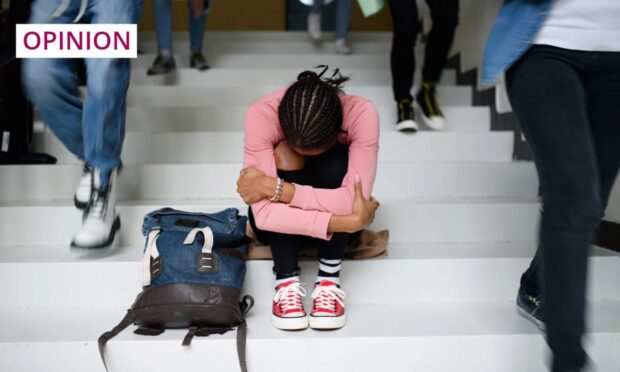Mental health services across NHS Grampian have been facing increasing demand for many years, as they respond to what is being called a “mental health crisis” among young people.
What’s new is clinicians now reporting that children are presenting with more complex mental health needs than ever before, which is putting even more pressure on an increasingly resource-limited NHS.
Alongside figures from mental health support services, survey-based research has shown that increasing numbers of young people are experiencing symptoms of mental health disorders. Most of the young people from these surveys with symptoms never seek or receive professional help, highlighting that adolescence is a critical period for intervention, as mental health experiences during this period often determine lifelong mental health trajectories.
While any child can develop mental health issues, it’s important to stress that not every young person has the same risk of mental health disorder. Our mental well-being is heavily influenced by the social, cultural, and economic circumstances in which we grow up and live.
For NHS Grampian, recent research shows that rates of mental health prescribing and referrals to specialist psychiatric services for children living in the most deprived areas are twice as high as for children in the least deprived areas. Trends also show an acceleration in the increase in mental health disorders since the Covid pandemic began, particularly among teenage girls.
Awareness campaigns such as January’s National Mental Wellness Month have tried to reduce the stigma associated with recognising mental health challenges and accessing professional support. But increased willingness to seek help doesn’t explain the rise in mental health problems amongst young people.
Considering the past decade of cuts to spending on public services, a global pandemic, and the current cost-of-living crisis, young people are growing up in conditions which increase the risk of mental health disorders. We need to take this challenge seriously, not only for children today, but also for their future.
We need to focus more attention on the society-wide factors
Mental health and well-being are often discussed in the media through an individualised lens, with advice to people in distress being to talk, take up exercise, or practice mindfulness. Whilst some people can find benefit in these approaches, the true causes of their distress are often not located within themselves. Traumatic experiences during childhood will understandably manifest as mental health challenges.
We need to focus more attention on the society-wide factors that negatively impact young people’s mental health in the first place. It’s like swimming upstream against a raging river – improving your stroke might help to keep your head above water, but you’ll struggle less once the flow is reduced.
A systematic lack of access to resources and opportunities for certain groups in society can’t be counteracted by individualised advice. Collective problems require collective solutions.
Inequalities in health are not a fact of life, and political institutions hold the power to reduce young people’s exposure to the harms of poverty, poor quality housing, and underfunded schools.
Funding is one answer. It would be incredibly helpful to spend more on services which can help young people experiencing acute distress, or intervene earlier to avoid a crisis. At the same time, we need to ensure that fewer children get to the point of ever needing these services.
The current situation is avoidable
The Scottish Government’s Wellbeing and Sustainable Development Bill, which has a public consultation process open now, has the potential to play a role. This proposes a new set of priorities for Scotland, alongside ways to measure our progress towards them.
The bill provides a chance to reconsider how we want to structure our society, and is an opportunity to embed some of our shared values in the way government works. What does a successful Scotland look like? Do we want to put economic metrics such as GDP above everything else, or is the health and well-being of our citizens the top priority?
I’m encouraged by proposed commitments in the bill to ‘tackle poverty by sharing opportunities, wealth, and power more equally’, and ensure ‘children grow up loved, safe and respected so that they realise their full potential’
I’m encouraged by proposed commitments in the bill to “tackle poverty by sharing opportunities, wealth, and power more equally”, and ensure “children grow up loved, safe and respected so that they realise their full potential”.
It’s easy to feel overwhelmed, dejected and powerless when confronted with a trend of rising mental health disorders among young people. However, the current situation is avoidable, and collectively we have the power to change the circumstances of children and young people for the better.
Dr Will Ball is a social epidemiologist and chancellor’s fellow at RGU who is leading research to better understand health inequalities and effective ways to reduce them. He is also a registered nurse

Conversation